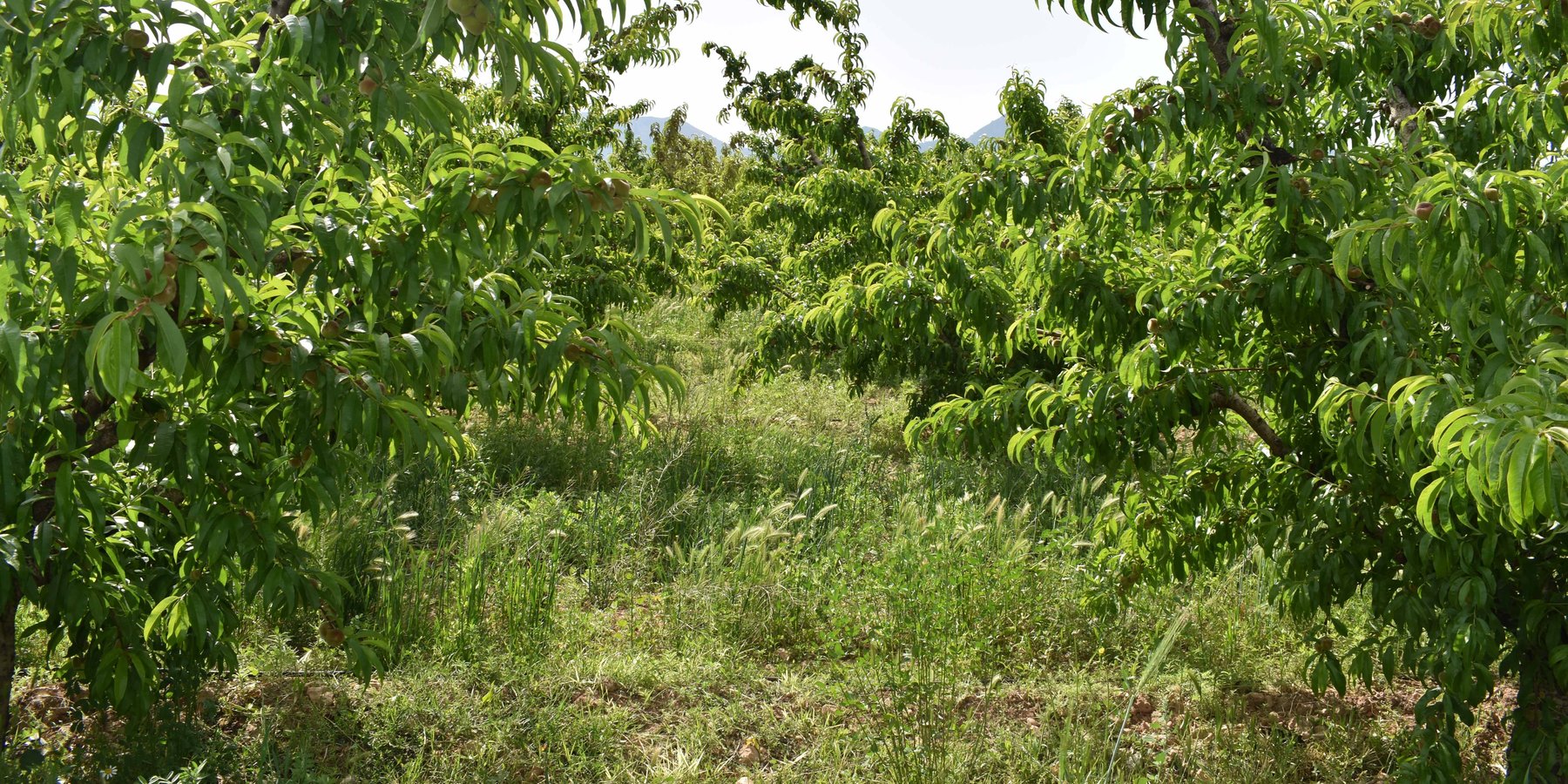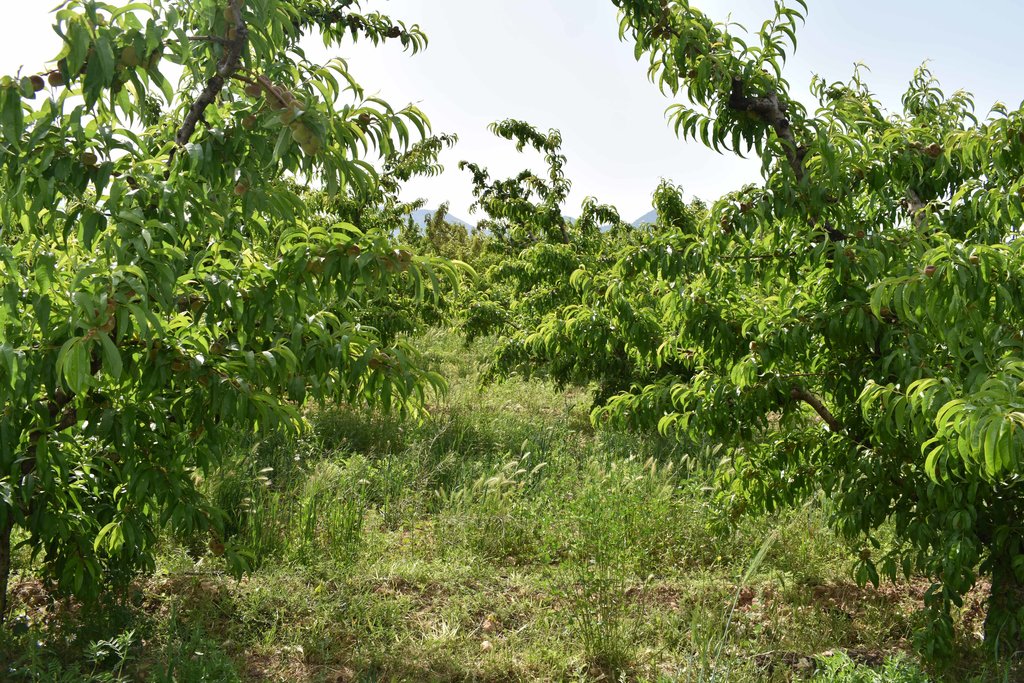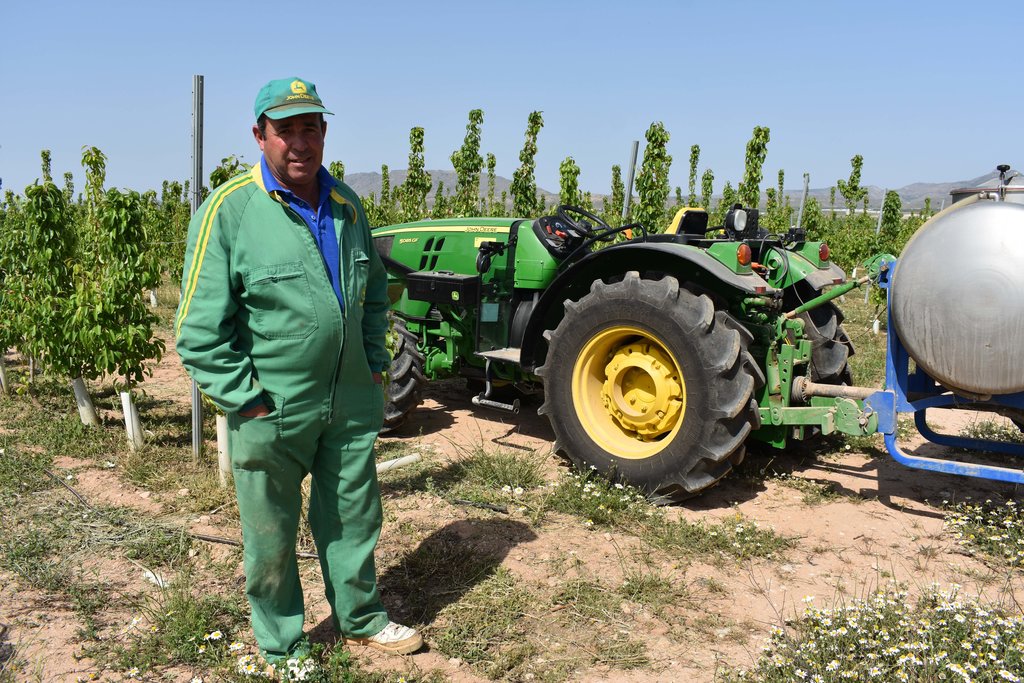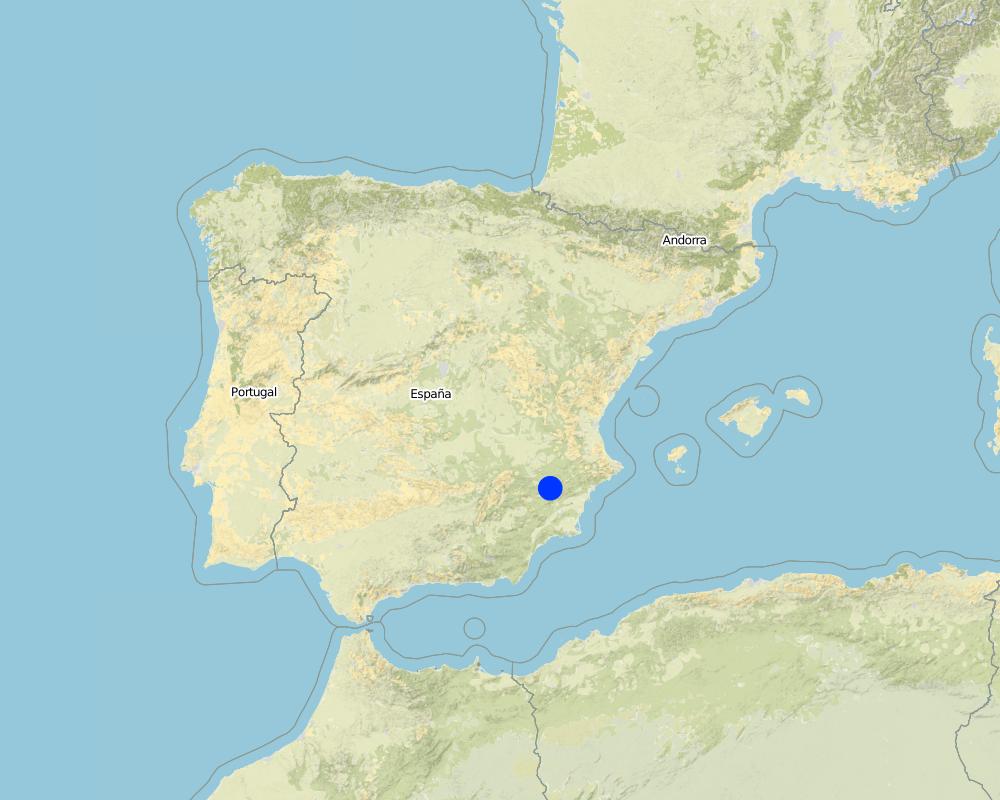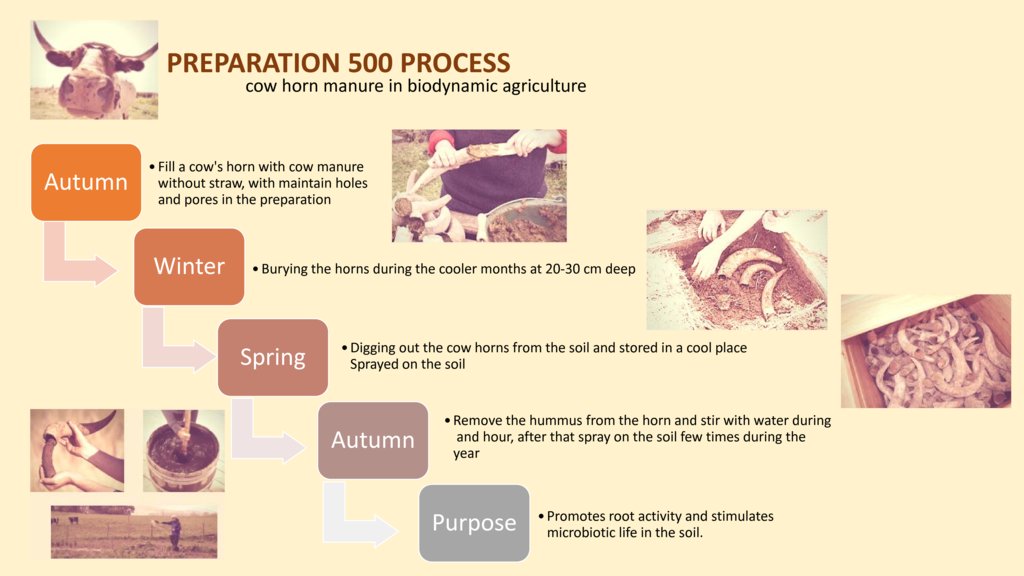Application of 'Preparation 500' in agricultural soils under a biodynamic management [Spain]
- Creation:
- Update:
- Compiler: Alicia Morugán-Coronado
- Editor: –
- Reviewers: Ursula Gaemperli, Gudrun Schwilch
Cow horn manure applied in biodynamic agricultural management.
technologies_2690 - Spain
View sections
Expand all Collapse all1. General information
1.2 Contact details of resource persons and institutions involved in the assessment and documentation of the Technology
Name of project which facilitated the documentation/ evaluation of the Technology (if relevant)
Interactive Soil Quality assessment in Europe and China for Agricultural productivity and Environmental Resilience (EU-iSQAPER)Name of the institution(s) which facilitated the documentation/ evaluation of the Technology (if relevant)
Agrochesmistry and Environment Department, University Miguel Hernandez (UMH) - Spain1.3 Conditions regarding the use of data documented through WOCAT
When were the data compiled (in the field)?
05/05/2017
The compiler and key resource person(s) accept the conditions regarding the use of data documented through WOCAT:
Yes
1.4 Declaration on sustainability of the described Technology
Is the Technology described here problematic with regard to land degradation, so that it cannot be declared a sustainable land management technology?
No
1.5 Reference to Questionnaire(s) on SLM Approaches
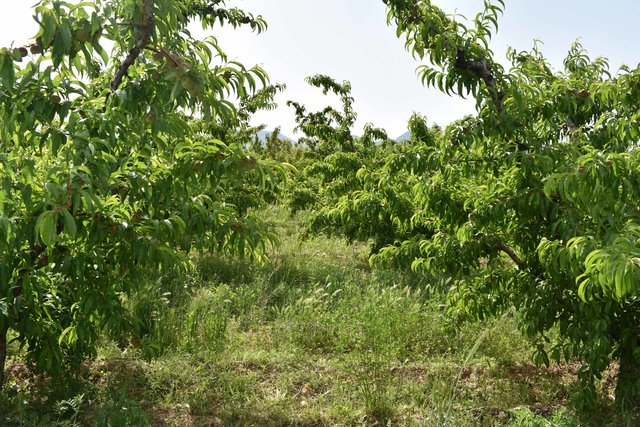
Fruit trees under biodynamic agricultural management in southern … [Spain]
Biodynamic farming is a method of farming that aims to treat the farm as a living system, based on the application of specific organic preparations which stimulate the natural functions of the farm soils and provide the necessary component towards a self-sustaining agro-ecological farm management.
- Compiler: Alicia Morugán-Coronado
2. Description of the SLM Technology
2.1 Short description of the Technology
Definition of the Technology:
Application of 'preparation number 500', commonly known as cow horn manure. Preparation 500 is made by filling a cow's horn with cow dung, and burying it in the soil during the cooler months to turn into dark humus. This is then sprayed up to four times a year over the orchard.
2.2 Detailed description of the Technology
Description:
1. Preparation 500 application in agricultural soils under a biodynamic management is applied in a flat orchard of 40 ha located in Jumilla in southeastern Spain. It is sited in the north east of the Murcia region, on the Altiplano area, close to the towns of Cieza and Yecla. This area has an important agricultural activity where the main plantations are vineyards, but as well orchards of different mediterranean fruits. Jumilla is a Spanish Denominación de Origen (DO) for wines that extends over the north of the region of Murcia.
2. This technology is based on the application of the preparation number 500, commonly known as cow horn manure. Preparation 500 is made by filling a cow's horn with cow dung every year, and burying it in the soil during the cooler months (November through February). The horns should be buried open end down so that they will not become water logged if the pit is over watered. When the preparation is ready after 4 months it should have turned into dark humus. It should then be stored in a cool place and in glazed, isolated pots. It is sprayed up to four times a year. The best times are in October and November and then again in February and March. It is stirred for one hour making a vortex. The Horn Manure preparation 500 should be diluted in good-quality rainwater that has been properly stored. The preparation is then stirred vigorously for exactly one hour before spraying. The water should be heated before stirring, ideally to body temperature. Spraying in the field area should be done in the evening, not before 5 pm (4 pm in winter) on a day that is not too windy or too hot, avoiding direct sunlight. A slightly overcast, late afternoon is ideal. Avoid spraying in the rain, or if heavy rains are forecasted after spraying. Don't spray if night frost is expected, in order to ensure the correct working of preparation 500.
3. The main purpose of this technology is to sustain living soils, since application of ‘Preparation 500’ is intended to increase soil bacteria life, enhance the earthworm activity, promote rooting and greater absorption and retention of water.
4. The flat tree orchard was already under organic farming management (since 1998) before the current technology was applied. In 2014 the farmer changed the agricultural management on his own initiative to biodynamic practice with the same crop. The major new activity was the elaboration of the preparation 500, that is sprayed out in the orchard after the weeds are cutted. Secondary activities focus on maintaining the preparation 500 during the rest of the year and on improving the soil by keeping a permanent vegetation cover and reducing the tillage.
5. There were several benefits observed after this technology was applied: regarding the soil quality a strong humus layer was formed and organic matter increased. In general the soil structure improved. Another positive impact was the response against plagues: the establishment of this self-sustaining agro-ecosystem as a whole increases the biodiversity and the beneficial species in the orchard.
6. The land user is satisfied with the results of this technology in his orchard because it opened him a new market sector - the biodynamic farm market. The fruit quality and the soil characteristics improved, soil organic matter, soil structure and response against plagues were enhanced. On the other hand, the land user mentioned as challenging factors the big amount of money to change the agricultural management to biodynamic farming and the great effort to get the Preparation 500 and the external organization certifications, which are expensive.
2.3 Photos of the Technology
2.4 Videos of the Technology
Comments, short description:
The spontaneous plants are cut during may in biodynamic agricultural land in southern Spain
Date:
05/05/2017
Location:
Jumilla
Name of videographer:
Alicia Morugán Coronado
2.5 Country/ region/ locations where the Technology has been applied and which are covered by this assessment
Country:
Spain
Region/ State/ Province:
Murcia
Further specification of location:
Jumilla
Map
×2.6 Date of implementation
Indicate year of implementation:
2014
2.7 Introduction of the Technology
Specify how the Technology was introduced:
- through land users' innovation
3. Classification of the SLM Technology
3.1 Main purpose(s) of the Technology
- improve production
- reduce, prevent, restore land degradation
3.2 Current land use type(s) where the Technology is applied

Cropland
- Tree and shrub cropping
If land use has changed due to the implementation of the Technology, indicate land use before implementation of the Technology:
Organic farming was established in 1998. In 2014 the farmer changed the agricultural management to biodynamic practice with the same crop on his own initiative.
3.3 Further information about land use
Water supply for the land on which the Technology is applied:
- full irrigation
Number of growing seasons per year:
- 1
3.4 SLM group to which the Technology belongs
- integrated soil fertility management
3.5 Spread of the Technology
Specify the spread of the Technology:
- evenly spread over an area
If the Technology is evenly spread over an area, indicate approximate area covered:
- 0.1-1 km2
Comments:
40 hectares
3.6 SLM measures comprising the Technology

agronomic measures
- A2: Organic matter/ soil fertility
- A3: Soil surface treatment
3.7 Main types of land degradation addressed by the Technology

chemical soil deterioration
- Cn: fertility decline and reduced organic matter content (not caused by erosion)

physical soil deterioration
- Pk: slaking and crusting
- Pu: loss of bio-productive function due to other activities

biological degradation
- Bq: quantity/ biomass decline
- Bs: quality and species composition/ diversity decline
3.8 Prevention, reduction, or restoration of land degradation
Specify the goal of the Technology with regard to land degradation:
- prevent land degradation
- reduce land degradation
4. Technical specifications, implementation activities, inputs, and costs
4.1 Technical drawing of the Technology
4.2 Technical specifications/ explanations of technical drawing
Species used: Flat peaches (Prunus persica var. platycarpa)
Flat peach tree root depth: 0.4m
Spacing between plants: 1.5m
Intervals between trees rows: 4m
Preparation 500 consist of cow manure without straw applied 4-5 times per year by spray.
Before application, the cow manure is buried in cow horn during the winter.
4.3 General information regarding the calculation of inputs and costs
Specify how costs and inputs were calculated:
- per Technology area
Indicate size and area unit:
40 hectares
other/ national currency (specify):
Euro
Indicate exchange rate from USD to local currency (if relevant): 1 USD =:
0.944508
Indicate average wage cost of hired labour per day:
60 Euro
4.4 Establishment activities
| Activity | Type of measure | Timing | |
|---|---|---|---|
| 1. | weed cutting | Agronomic | october |
| 2. | filling a cow's horns with cow dung | Agronomic | november |
| 3. | burying the cow's horns it in the soil | Agronomic | november-february |
| 4. | store the cow's horns in a cool place in glazed pots | Agronomic | after 4 months burying |
| 5. | mix with water and spray in the orchard | Agronomic | october-november and february-march |
Comments:
all the costs are for the 40 ha together
4.5 Costs and inputs needed for establishment
| Specify input | Unit | Quantity | Costs per Unit | Total costs per input | % of costs borne by land users | |
|---|---|---|---|---|---|---|
| Labour | Weed cutting | person-day | 2.0 | 60.0 | 120.0 | 100.0 |
| Labour | Elaboration process Preparation 500 | persona/dia | 15.0 | 60.0 | 900.0 | 100.0 |
| Labour | organic amendment | persona/dia | 5.0 | 60.0 | 300.0 | 100.0 |
| Equipment | picks and shovels to dig the cow horns during winter | item | 2.0 | 18.0 | 36.0 | 100.0 |
| Equipment | glazed storing pots for Preparation 500 | item | 100.0 | 10.0 | 1000.0 | 100.0 |
| Equipment | Cow horns to be filled with cow dung | item | 3.0 | 50.0 | 150.0 | 100.0 |
| Equipment | tractor with trailer (hire per day) | pieza | 1.0 | 30.0 | 30.0 | 100.0 |
| Equipment | cow dung | item | 5.0 | 60.0 | 300.0 | 100.0 |
| Plant material | shovel | item | 1.0 | 15.0 | 15.0 | 100.0 |
| Plant material | tank | item | 1.0 | 10.0 | 10.0 | 100.0 |
| Plant material | Ride-on Mowers | item | 1.0 | 3000.0 | 3000.0 | 100.0 |
| Fertilizers and biocides | cow manure needed to produce Preparation 500 | kg | 10.0 | 10.0 | 100.0 | 100.0 |
| Fertilizers and biocides | organic amendment | |||||
| Total costs for establishment of the Technology | 5961.0 | |||||
Comments:
all the costs are for the 40 ha together
4.6 Maintenance/ recurrent activities
| Activity | Type of measure | Timing/ frequency | |
|---|---|---|---|
| 1. | weed cutting | Agronomic | October |
| 2. | filling a cow's horns with cow dung | Agronomic | November-December |
| 3. | burying the cow's horns it in the soil | Agronomic | November-February |
| 4. | store the cow's horns in a cool place in glazed pots | Agronomic | After 4 months burying |
| 5. | mix with water and spray in the orchard | Agronomic | october-november and february-march |
Comments:
all the costs are for the 40 ha together
4.7 Costs and inputs needed for maintenance/ recurrent activities (per year)
| Specify input | Unit | Quantity | Costs per Unit | Total costs per input | % of costs borne by land users | |
|---|---|---|---|---|---|---|
| Labour | Elaboration process Preparation 500 | person/day | 15.0 | 60.0 | 900.0 | 100.0 |
| Labour | organic amendment | person/day | 5.0 | 60.0 | 300.0 | 100.0 |
| Labour | weed cutting | person/day | 2.0 | 60.0 | 120.0 | 100.0 |
| Equipment | tractor with trailer (hire per day) | day | 8.0 | 30.0 | 240.0 | 100.0 |
| Fertilizers and biocides | cow manure needed to produce Preparation 500 | kg | 10.0 | 10.0 | 100.0 | 100.0 |
| Fertilizers and biocides | manure | item | ||||
| Total costs for maintenance of the Technology | 1660.0 | |||||
Comments:
The price of external certification is very high.
4.8 Most important factors affecting the costs
Describe the most determinate factors affecting the costs:
Unforseen weather is always a risk in conventional as well as in bio-dynamic agriculture. The rainy days, high temperatures and direct sunlight can affect the correct application of preparation 500 and could cause a decrease in the orchard production.
5. Natural and human environment
5.1 Climate
Annual rainfall
- < 250 mm
- 251-500 mm
- 501-750 mm
- 751-1,000 mm
- 1,001-1,500 mm
- 1,501-2,000 mm
- 2,001-3,000 mm
- 3,001-4,000 mm
- > 4,000 mm
Specify average annual rainfall (if known), in mm:
369.00
Specifications/ comments on rainfall:
Torrential rains occur on September and October
Agro-climatic zone
- semi-arid
5.2 Topography
Slopes on average:
- flat (0-2%)
- gentle (3-5%)
- moderate (6-10%)
- rolling (11-15%)
- hilly (16-30%)
- steep (31-60%)
- very steep (>60%)
Landforms:
- plateau/plains
- ridges
- mountain slopes
- hill slopes
- footslopes
- valley floors
Altitudinal zone:
- 0-100 m a.s.l.
- 101-500 m a.s.l.
- 501-1,000 m a.s.l.
- 1,001-1,500 m a.s.l.
- 1,501-2,000 m a.s.l.
- 2,001-2,500 m a.s.l.
- 2,501-3,000 m a.s.l.
- 3,001-4,000 m a.s.l.
- > 4,000 m a.s.l.
Indicate if the Technology is specifically applied in:
- not relevant
Comments and further specifications on topography:
411 m a.s.l.
5.3 Soils
Soil depth on average:
- very shallow (0-20 cm)
- shallow (21-50 cm)
- moderately deep (51-80 cm)
- deep (81-120 cm)
- very deep (> 120 cm)
Soil texture (topsoil):
- coarse/ light (sandy)
- medium (loamy, silty)
Soil texture (> 20 cm below surface):
- coarse/ light (sandy)
Topsoil organic matter:
- high (>3%)
If available, attach full soil description or specify the available information, e.g. soil type, soil PH/ acidity, Cation Exchange Capacity, nitrogen, salinity etc.
1157 µS/cm; pH 8; 12% clay, 36% silt; 52% sand; 5.7% organic matter; 5 g/kg Nitrogen; 265 mg (kg available phosphorus).
5.4 Water availability and quality
Ground water table:
5-50 m
Availability of surface water:
good
Water quality (untreated):
for agricultural use only (irrigation)
Is water salinity a problem?
Yes
Specify:
Excessive salt content in the irrigation water
Is flooding of the area occurring?
No
5.5 Biodiversity
Species diversity:
- medium
Habitat diversity:
- medium
5.6 Characteristics of land users applying the Technology
Sedentary or nomadic:
- Sedentary
Market orientation of production system:
- commercial/ market
Off-farm income:
- less than 10% of all income
Relative level of wealth:
- average
Individuals or groups:
- individual/ household
Level of mechanization:
- mechanized/ motorized
Gender:
- men
Age of land users:
- middle-aged
5.7 Average area of land owned or leased by land users applying the Technology
- < 0.5 ha
- 0.5-1 ha
- 1-2 ha
- 2-5 ha
- 5-15 ha
- 15-50 ha
- 50-100 ha
- 100-500 ha
- 500-1,000 ha
- 1,000-10,000 ha
- > 10,000 ha
Is this considered small-, medium- or large-scale (referring to local context)?
- medium-scale
5.8 Land ownership, land use rights, and water use rights
Land ownership:
- individual, titled
Land use rights:
- individual
Water use rights:
- communal (organized)
5.9 Access to services and infrastructure
health:
- poor
- moderate
- good
education:
- poor
- moderate
- good
technical assistance:
- poor
- moderate
- good
employment (e.g. off-farm):
- poor
- moderate
- good
markets:
- poor
- moderate
- good
energy:
- poor
- moderate
- good
roads and transport:
- poor
- moderate
- good
drinking water and sanitation:
- poor
- moderate
- good
financial services:
- poor
- moderate
- good
6. Impacts and concluding statements
6.1 On-site impacts the Technology has shown
Socio-economic impacts
Production
crop quality
Comments/ specify:
The product quality improved with preparation 500 and higher resistance to plagues was observed.
production area
Comments/ specify:
New production areas were acquired for new market opportunities thanks to the biodynamic product.
Income and costs
expenses on agricultural inputs
Comments/ specify:
Expenses on agricultural inputs increased after the application of preparation 500.
farm income
Comments/ specify:
After the preparation 500 application, the incomes in the farm increased because new market opportunities appear in biodynamic sector, and the land user can establish the product price because the flat peaches in biodynamic market is a new product in markets.
Socio-cultural impacts
SLM/ land degradation knowledge
Comments/ specify:
Biodynamic farming reduces soil degradation
Ecological impacts
Water cycle/ runoff
water quantity
Comments/ specify:
The application of preparation 500 increases the moisture in soil.
Soil
soil moisture
Comments/ specify:
The soil keeps the moisture because of the organic amendment applied through preparation 500.
soil loss
Comments/ specify:
After application of preparation 500 the tillage was reduced and the soil loss decreased.
soil crusting/ sealing
Comments/ specify:
Soil structure was improved after preparation 500 application.
soil compaction
Comments/ specify:
Soil structure was improved after preparation 500 application.
nutrient cycling/ recharge
Comments/ specify:
Soil nutrient was improved after preparation 500 application.
soil organic matter/ below ground C
Comments/ specify:
Soil organic matter was enhanced after preparation 500 application.
acidity
Comments/ specify:
Reduction of soil pH was observed after the application of organic amendment in preparation 500.
Biodiversity: vegetation, animals
biomass/ above ground C
Comments/ specify:
Biomass was enhanced after preparation 500 application.
invasive alien species
Comments/ specify:
The response of the soil and the orchard against invasive species was empowered after preparation 500 application.
beneficial species
Comments/ specify:
Beneficial species have appeared in the agro-ecosystem after preparation 500 application
habitat diversity
Comments/ specify:
After preparation 500 application a self-sustainable agro-ecosystem was formed.
pest/ disease control
Comments/ specify:
The response of the soil and the orchard against disease or pest were empowered after preparation 500 application.
6.2 Off-site impacts the Technology has shown
groundwater/ river pollution
Comments/ specify:
With the application of preparation 500 inorganic fertilizers and plaguicides are not needed anymore, and therefore groundwater pollution was reduced.
6.3 Exposure and sensitivity of the Technology to gradual climate change and climate-related extremes/ disasters (as perceived by land users)
Gradual climate change
Gradual climate change
| Season | Type of climatic change/ extreme | How does the Technology cope with it? | |
|---|---|---|---|
| seasonal rainfall | autumn | increase | not well |
Climate-related extremes (disasters)
Climatological disasters
| How does the Technology cope with it? | |
|---|---|
| heatwave | not well at all |
| drought | not well at all |
Biological disasters
| How does the Technology cope with it? | |
|---|---|
| epidemic diseases | moderately |
6.4 Cost-benefit analysis
How do the benefits compare with the establishment costs (from land users’ perspective)?
Short-term returns:
neutral/ balanced
Long-term returns:
positive
How do the benefits compare with the maintenance/ recurrent costs (from land users' perspective)?
Short-term returns:
slightly positive
Long-term returns:
very positive
6.5 Adoption of the Technology
- single cases/ experimental
Of all those who have adopted the Technology, how many have did so spontaneously, i.e. without receiving any material incentives/ payments?
- 90-100%
6.6 Adaptation
Has the Technology been modified recently to adapt to changing conditions?
No
6.7 Strengths/ advantages/ opportunities of the Technology
| Strengths/ advantages/ opportunities in the land user’s view |
|---|
| Strong humus formation. |
| Improvement against plagues. |
| Greater water absorption and retention. |
| Strengths/ advantages/ opportunities in the compiler’s or other key resource person’s view |
|---|
| Increase of organic matter. |
| Enhancement of soil structure. |
| Increase of soil biodiversity. |
6.8 Weaknesses/ disadvantages/ risks of the Technology and ways of overcoming them
| Weaknesses/ disadvantages/ risks in the land user’s view | How can they be overcome? |
|---|---|
| Short response time to the weather risks. | The land user must apply the preparation 500 avoiding rainy days, high temperatures and direct sunlight. The application of preparation 500 around the orchard must be in the afternoon 4 times per year to ensure the effectiveness of this preparation. |
| Weaknesses/ disadvantages/ risks in the compiler’s or other key resource person’s view | How can they be overcome? |
|---|---|
| The high dependency on climatological conditions | The land user must apply the preparation 500 avoiding rainy days, high temperatures and direct sunlight. The application of preparation 500 around the orchard must be in the afternoon 4 times per year to ensure the effectiveness of this preparation. |
7. References and links
7.1 Methods/ sources of information
- field visits, field surveys
2
- interviews with land users
1
- interviews with SLM specialists/ experts
2
- compilation from reports and other existing documentation
4
7.2 References to available publications
Title, author, year, ISBN:
no
7.3 Links to relevant information which is available online
Title/ description:
Web page
URL:
http://www.frutasvargas.com/
Links and modules
Expand all Collapse allLinks

Fruit trees under biodynamic agricultural management in southern … [Spain]
Biodynamic farming is a method of farming that aims to treat the farm as a living system, based on the application of specific organic preparations which stimulate the natural functions of the farm soils and provide the necessary component towards a self-sustaining agro-ecological farm management.
- Compiler: Alicia Morugán-Coronado
Modules
No modules


